 Chris Stafford @CK Syndicate
.
September 07, 2021
.
Department
Chris Stafford @CK Syndicate
.
September 07, 2021
.
Department
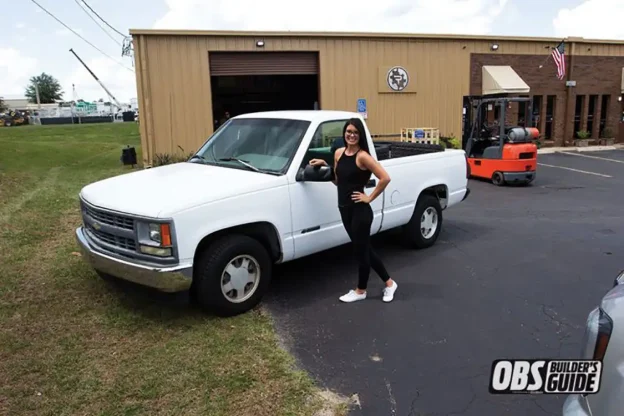
Last updated: July 14, 2025
In my opinion, 1988 was the exact year that jump-started the street chevy trucks era with the release of the all-new re-designed GM trucks commonly known as the “OBS” (Original Body Style, Old Body Style). This redesign by GM officially made a truck more than just a tool on the farm. It sparked the creation of an entire culture of automotive enthusiasts, and the street truck/sport truck movement was born. The GMT400 is said to have influenced GM designers long after they were no longer produced, and for good reason! We believe to this day they are the best-looking trucks on the road, we may be a little biased though!
Throughout its 10+ years of production, these trucks just kept getting better and better in terms of design, comfort, reliability, power and safety. Although GM made a ton of changes both cosmetically and mechanically to the GMT400 trucks, we’ll hit the high points of the changes made throughout the years in the evolution of the OBS Chevy. We wanted to break down all the biggest and best changes between the ’88-’94 and ’94-’98 obs chevy trucks. If you’re curious about the OBS Chevy years, this breakdown will guide you through every important model update..
So, what does OBS Chevy mean? It refers to Chevy C/K trucks that were manufactured by General Motors between the years of 1988 and 1998. Marketed under the Chevrolet and GMC brands, the C/K series included a wide range of vehicles including a chevy truck and two SUV models. While most commonly associated with pickup trucks, the model line also included medium-duty and heavy trucks. “C” denoted a two-wheel drive; “K” denoted four-wheel drive.
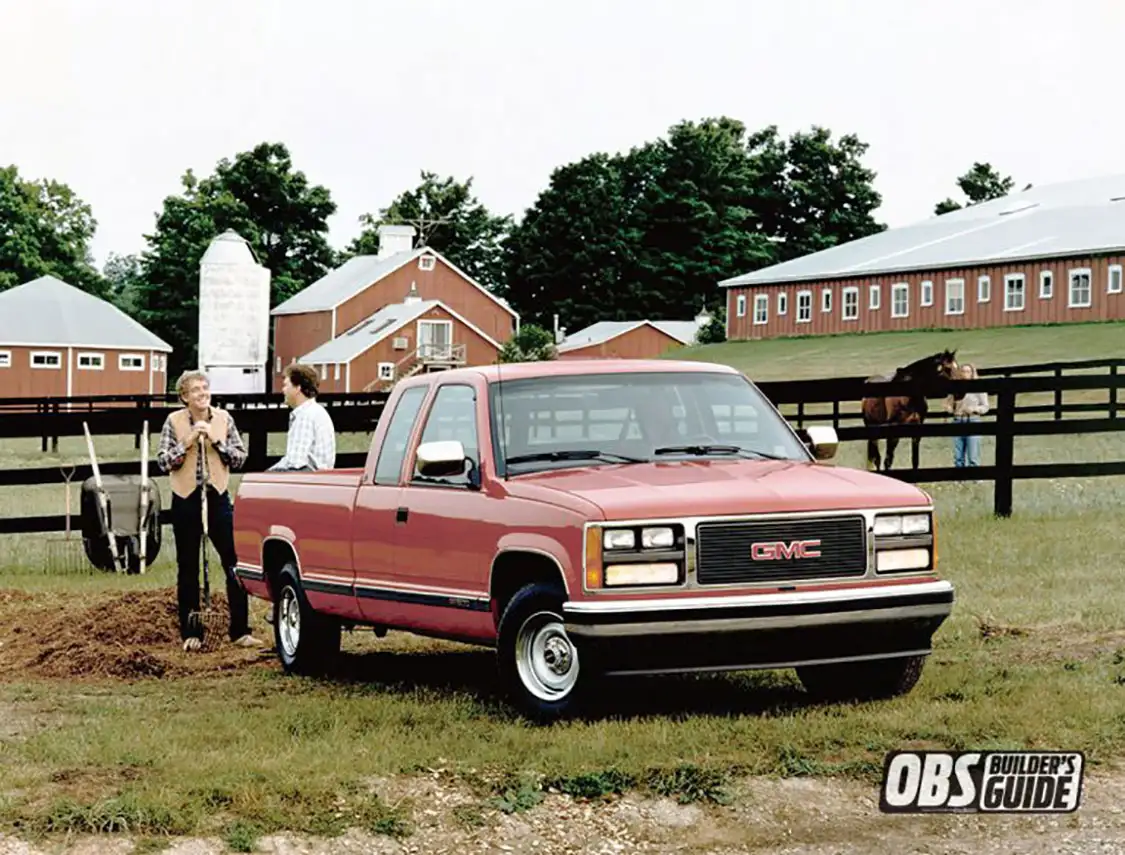 There were eight different versions of the C/K line for 1988: Fleetside Single Cab, Fleetside Extended Cab, Fleetside Crew Cab and Stepside Single Cab models, each in either 2WD or 4WD drive-lines. Three trim levels were available for these trucks including Cheyenne, Scottsdale and Silverado.
There were eight different versions of the C/K line for 1988: Fleetside Single Cab, Fleetside Extended Cab, Fleetside Crew Cab and Stepside Single Cab models, each in either 2WD or 4WD drive-lines. Three trim levels were available for these trucks including Cheyenne, Scottsdale and Silverado.
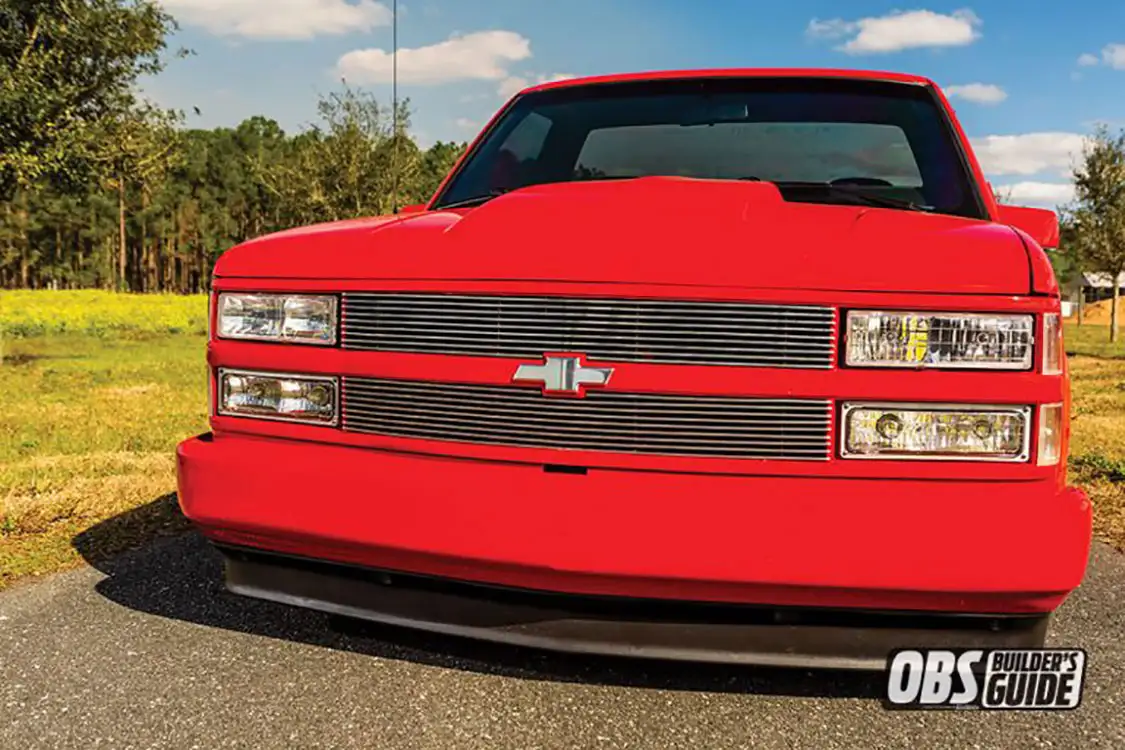
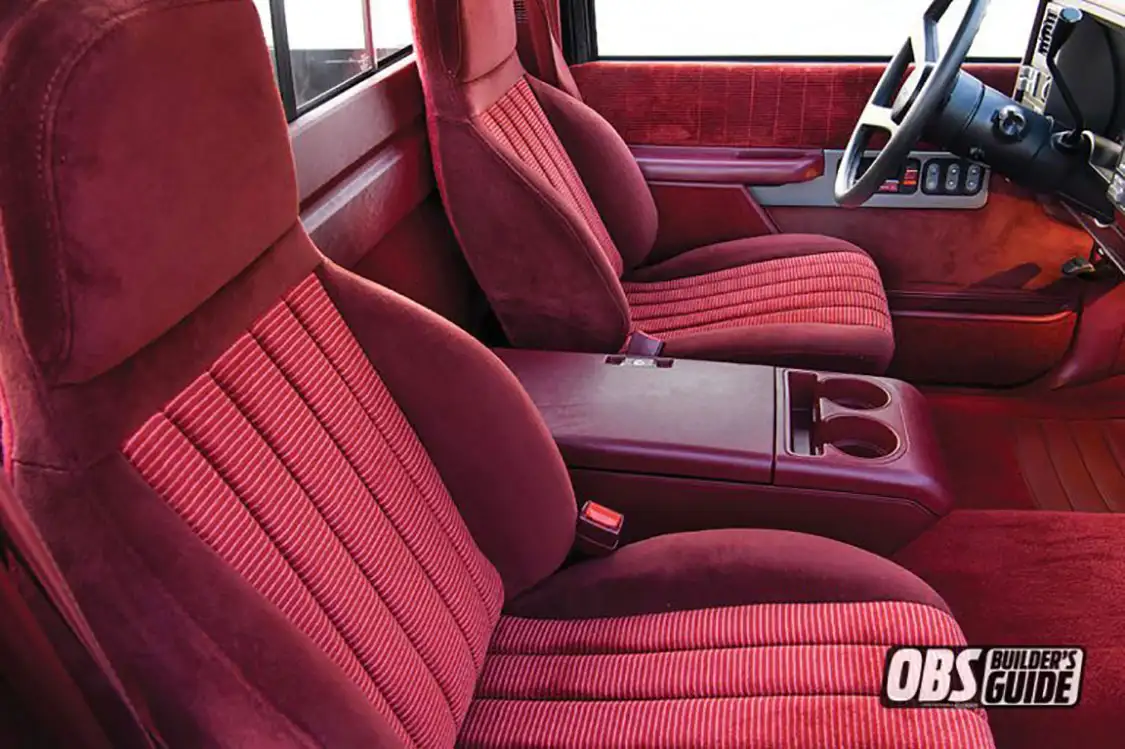
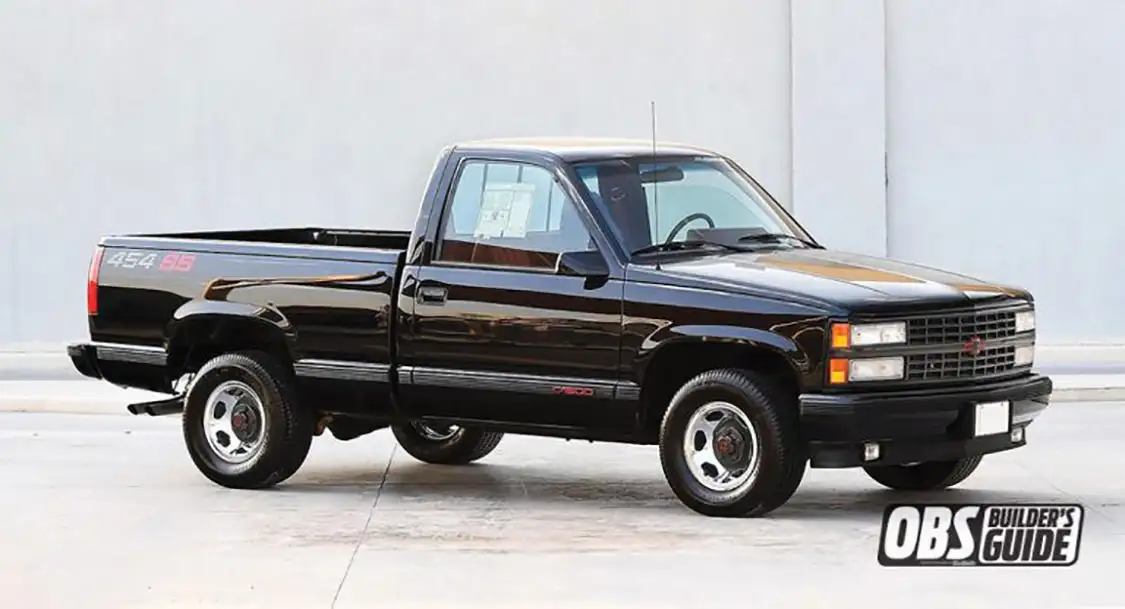
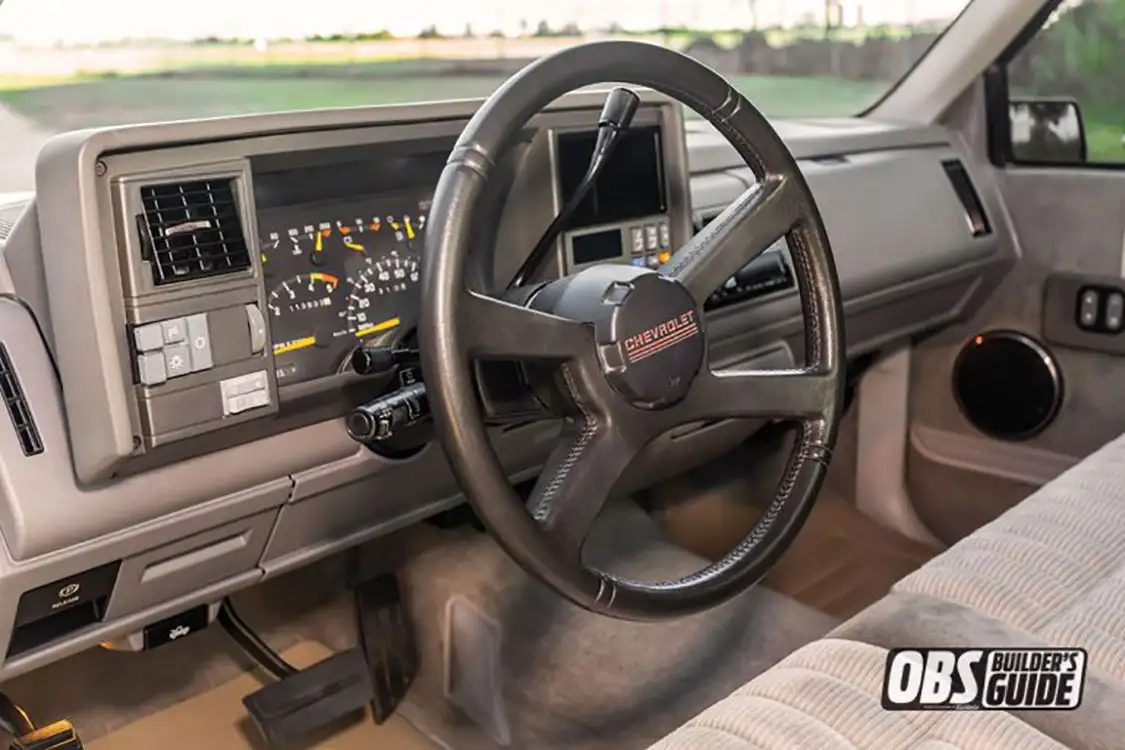
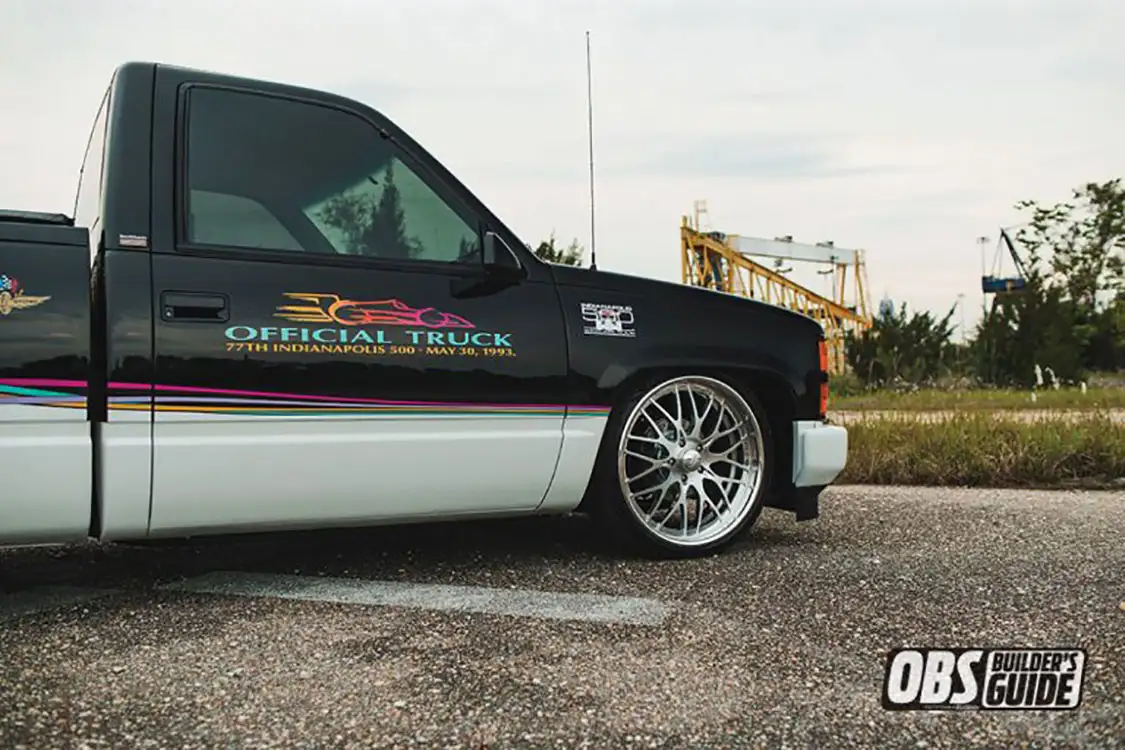
I love these trucks as well. I actually own a ‘93 stepside and still daily drive it. — Reddit user, r/regularcarreviews
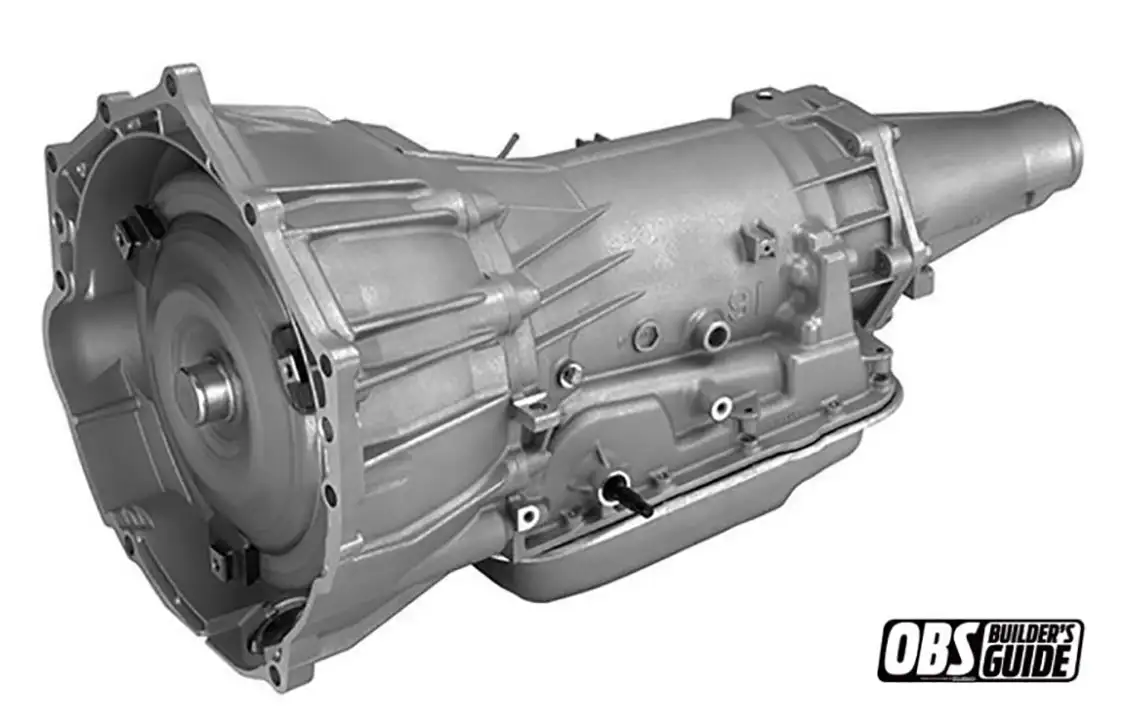
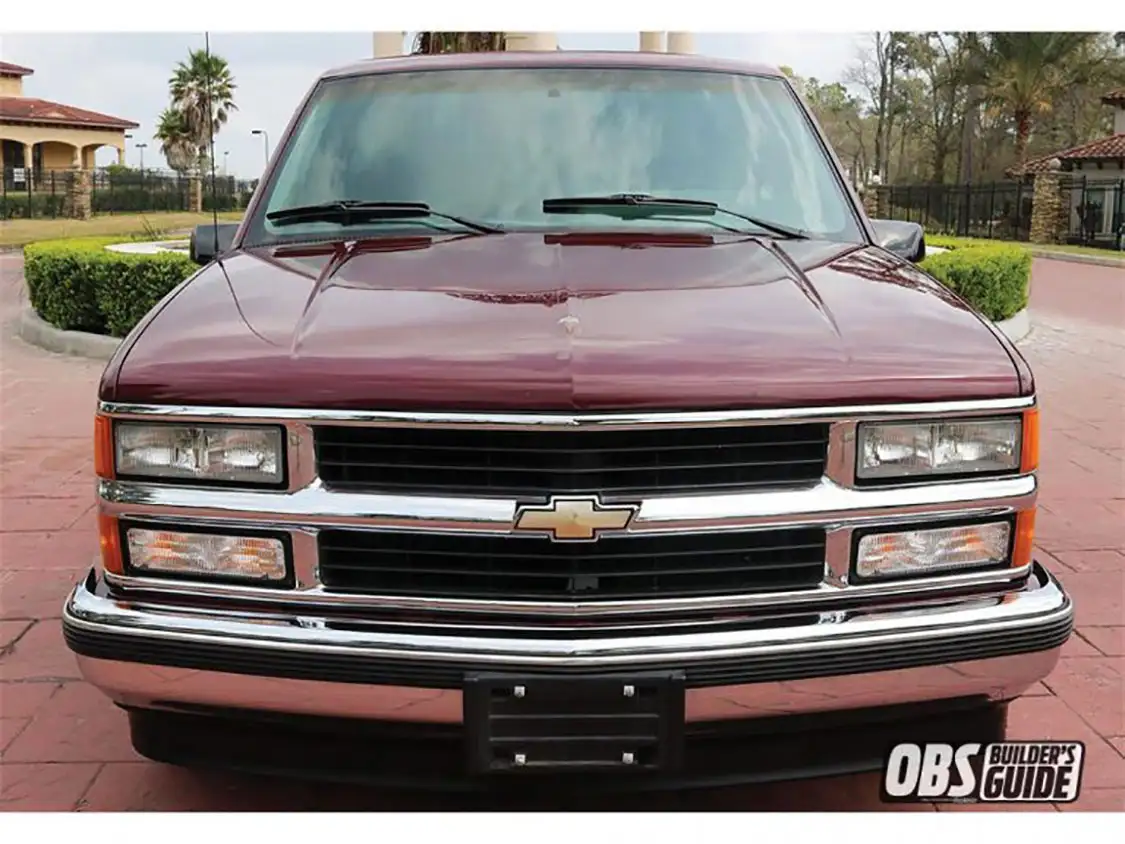
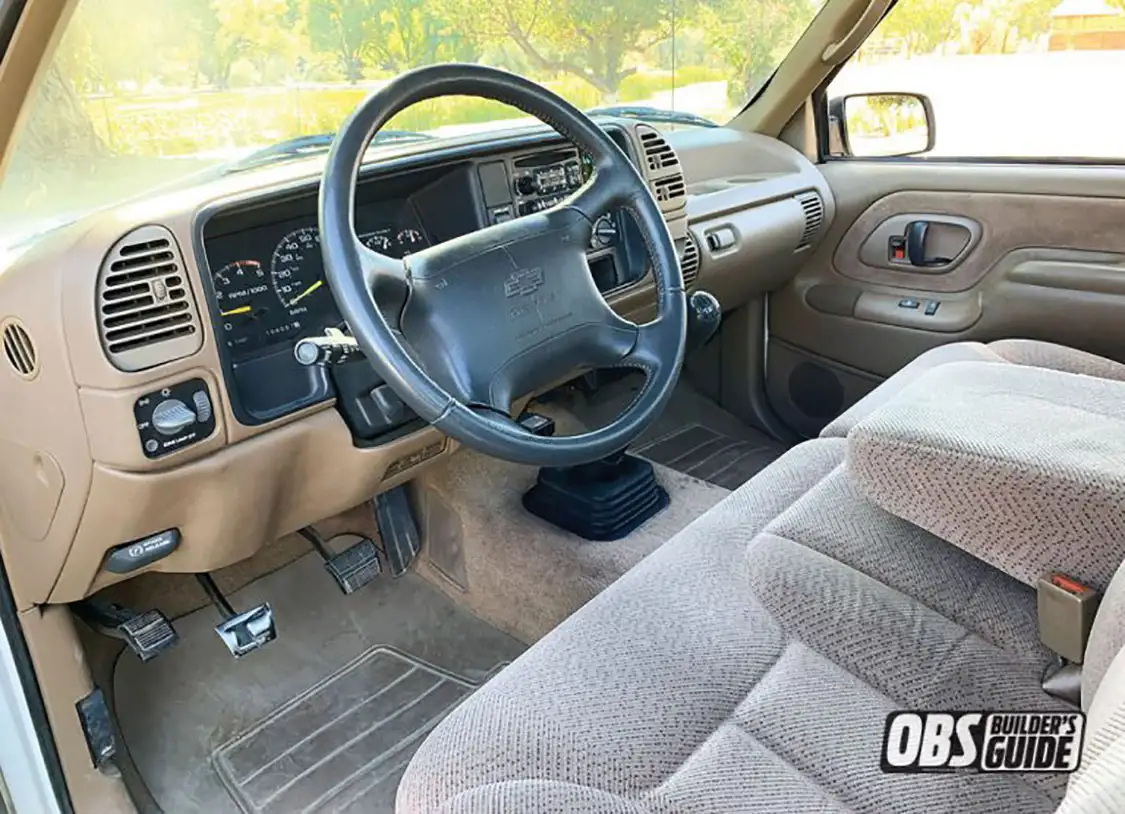
Throughout its 10+ years of production, these trucks just kept getting better and better in terms of design, comfort, reliability, power and safety.
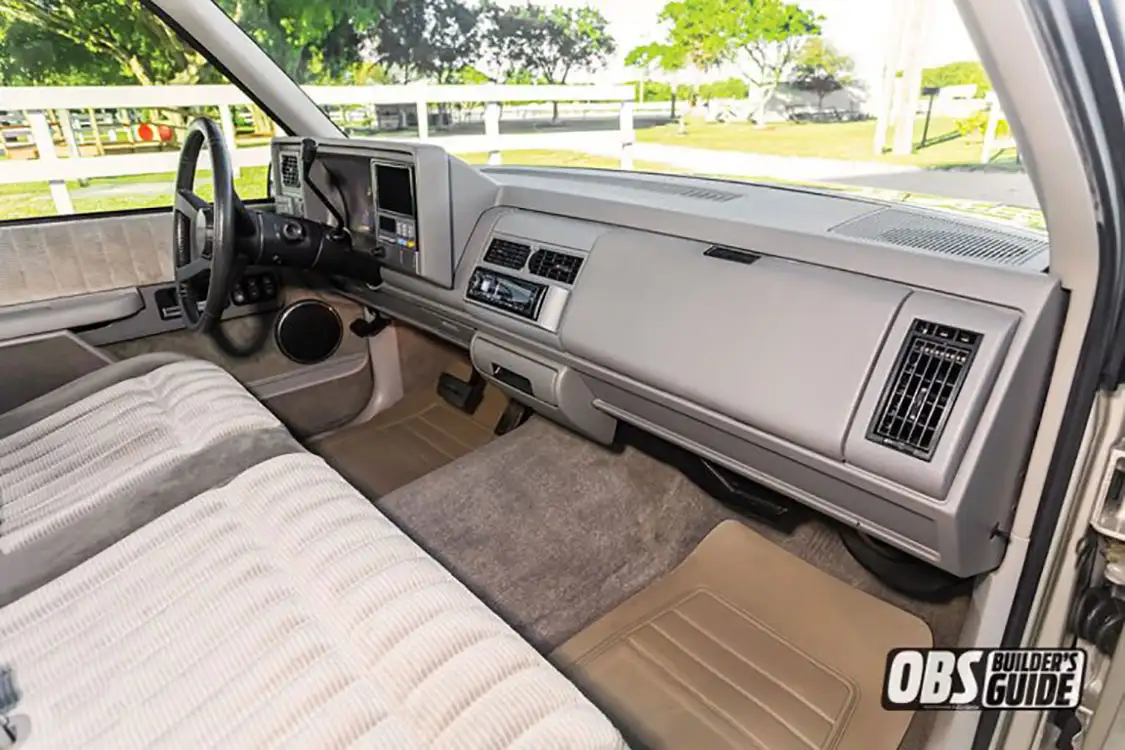
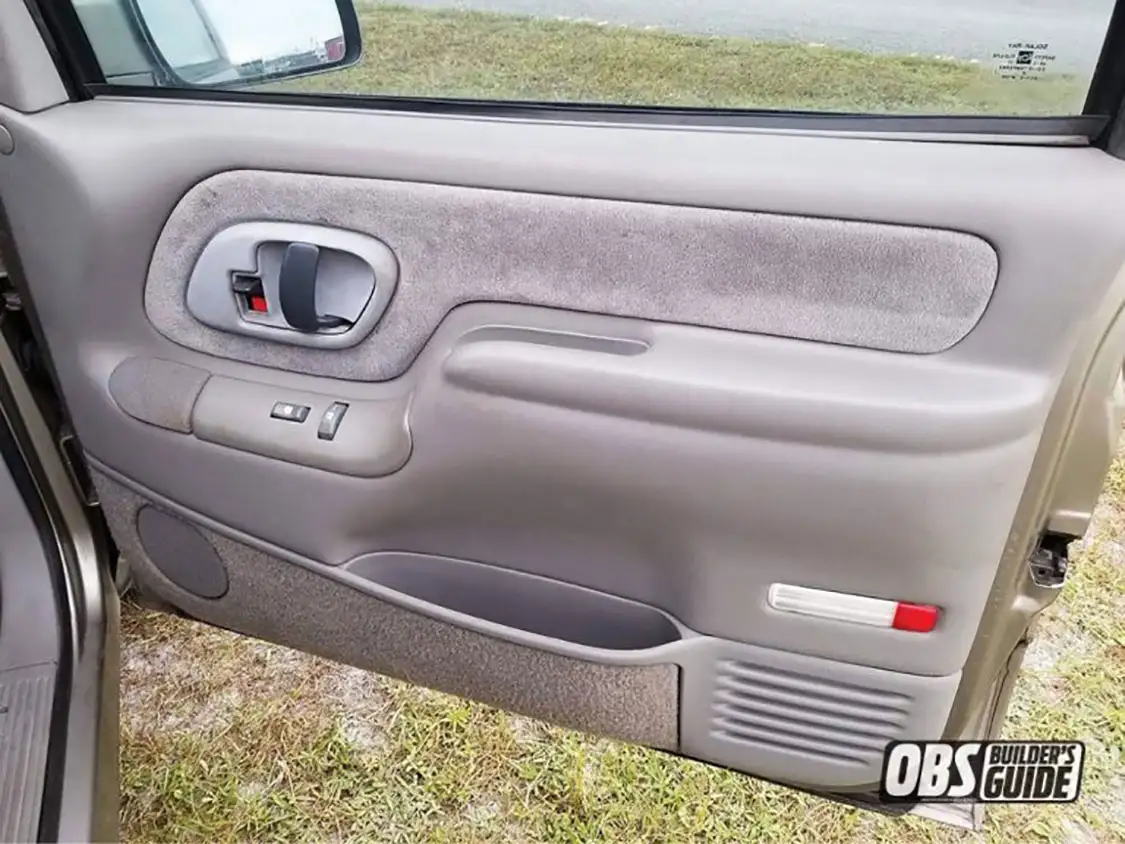
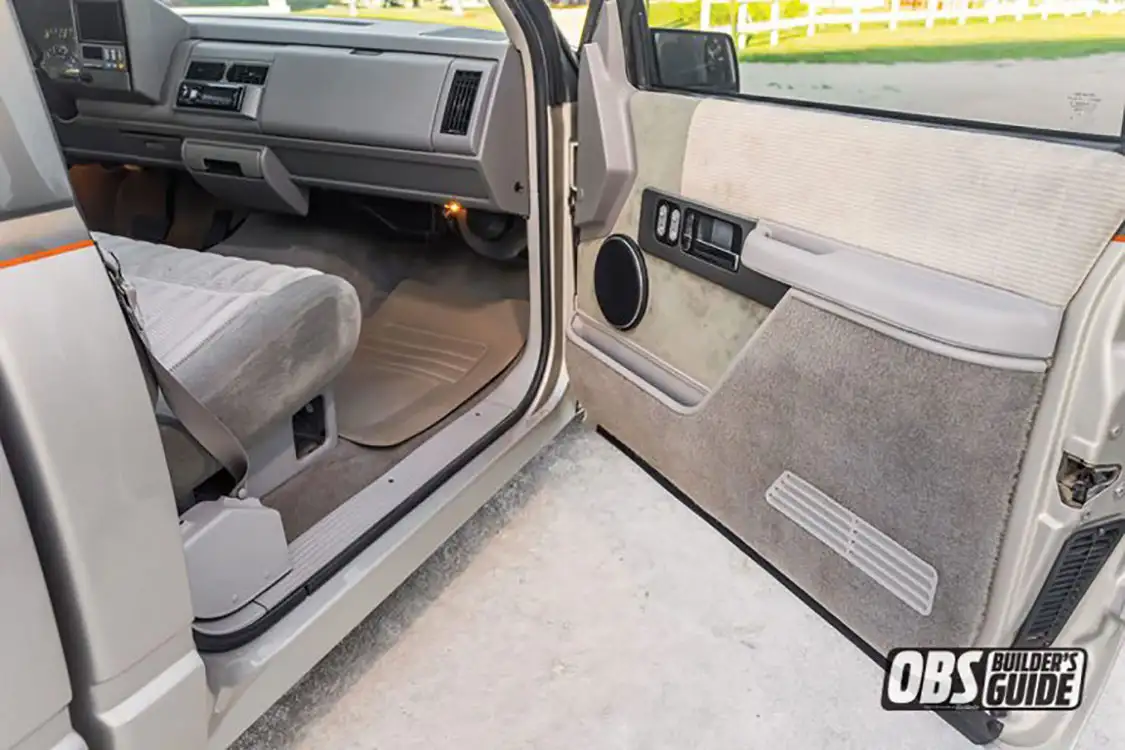
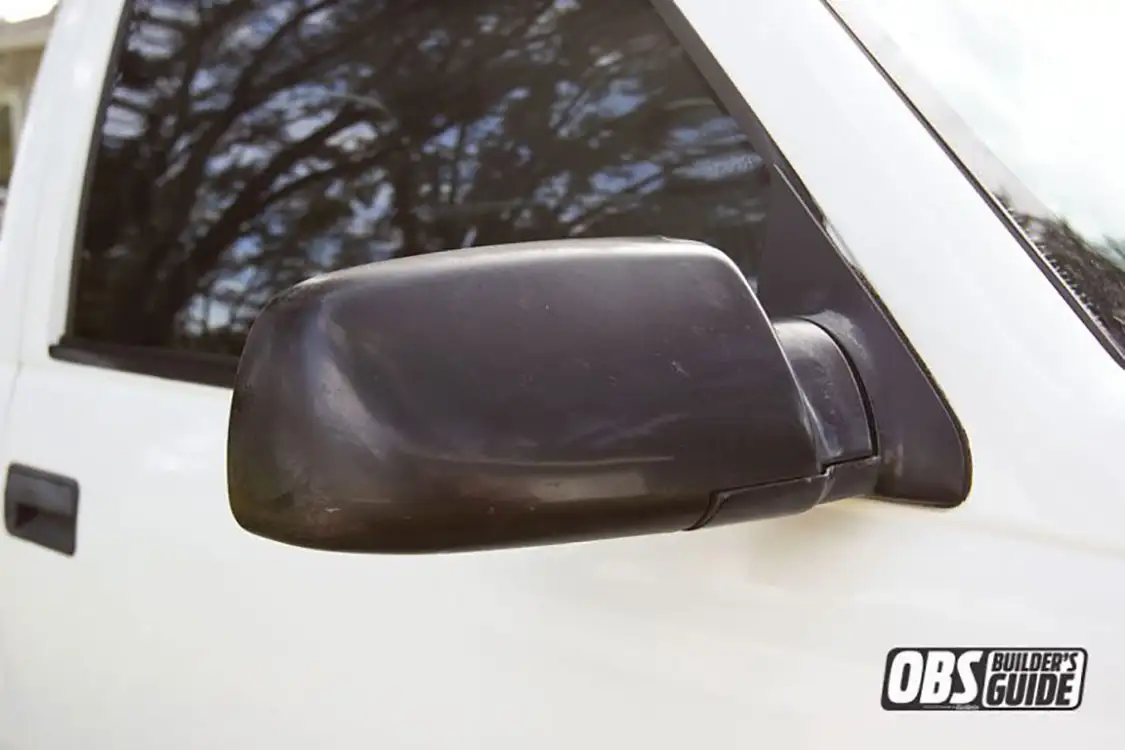
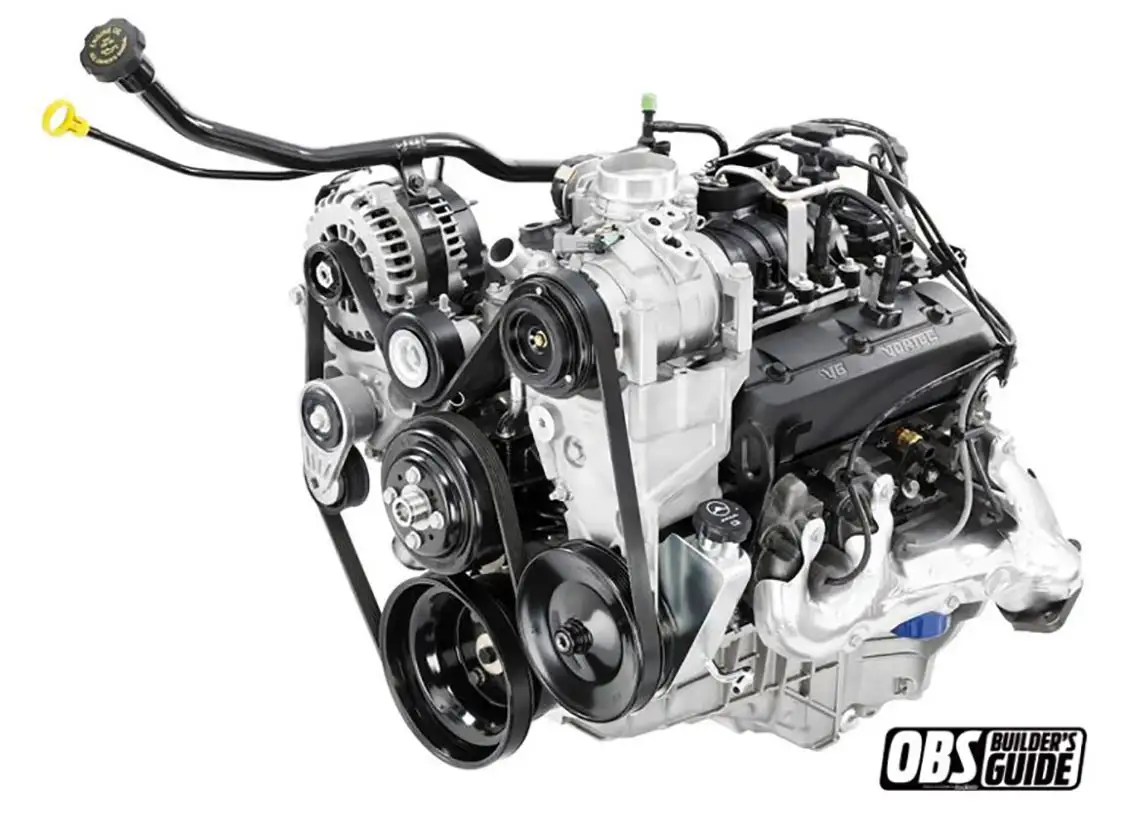
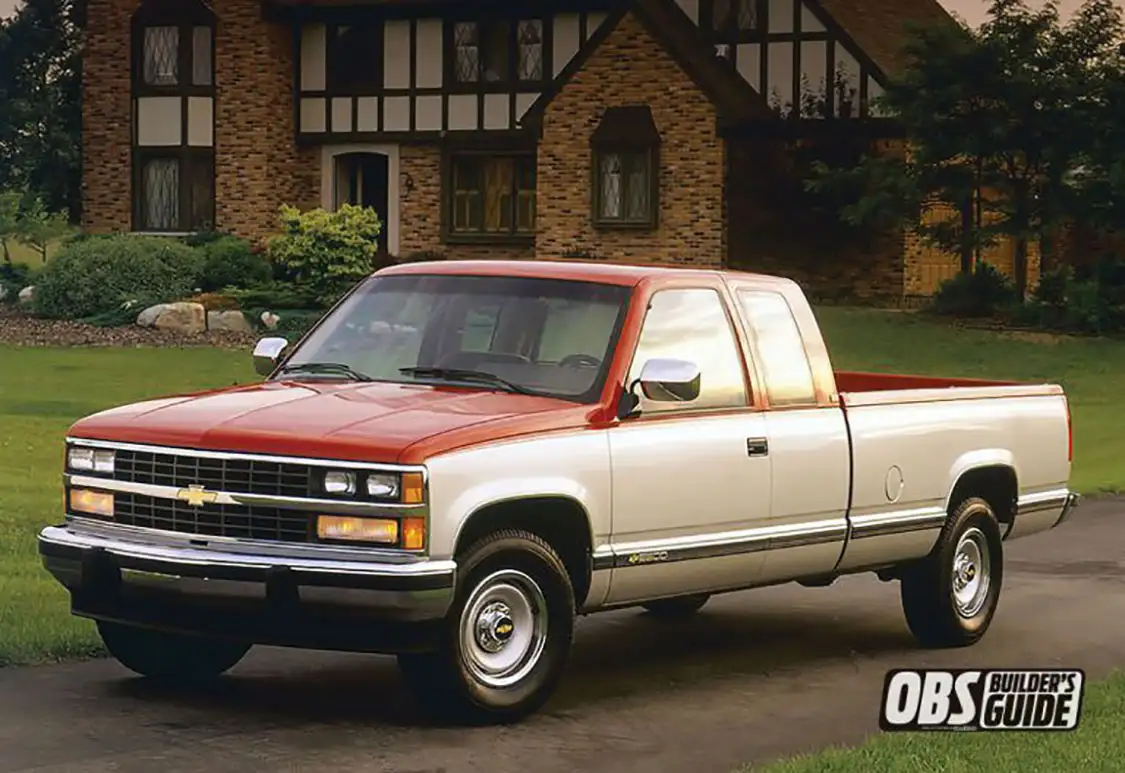
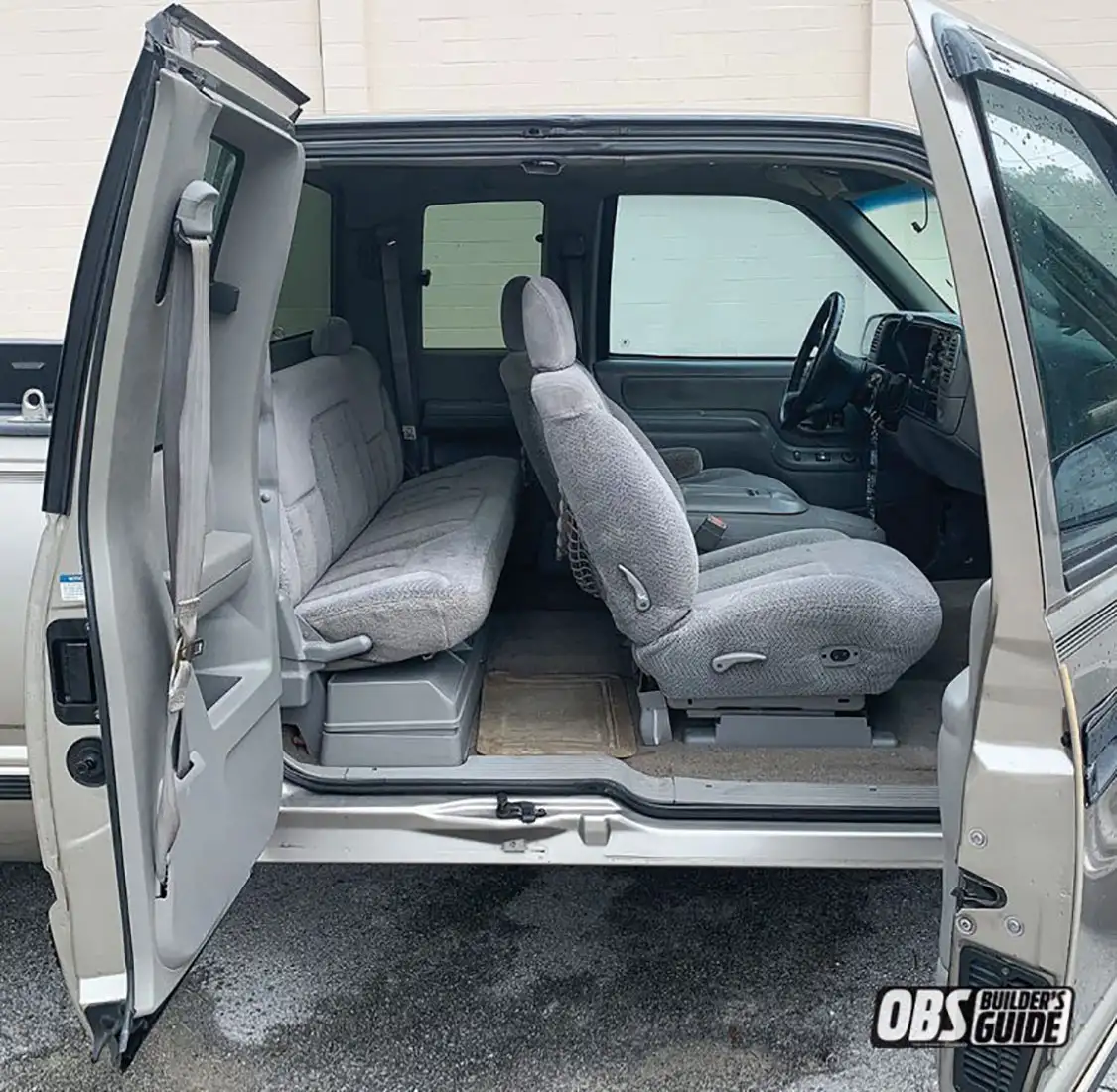
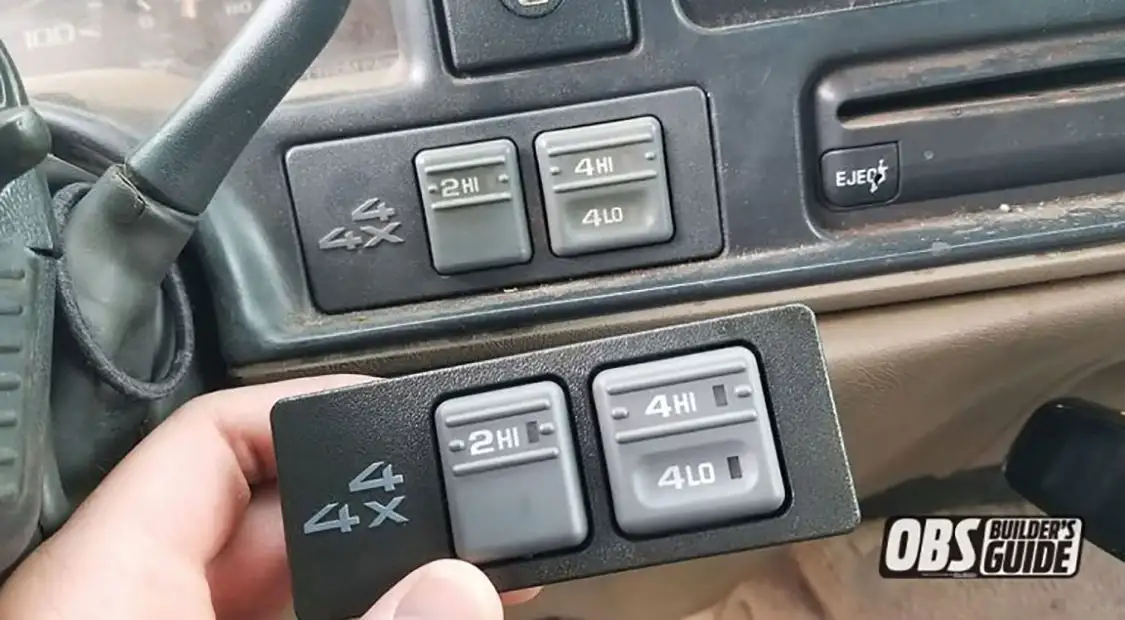
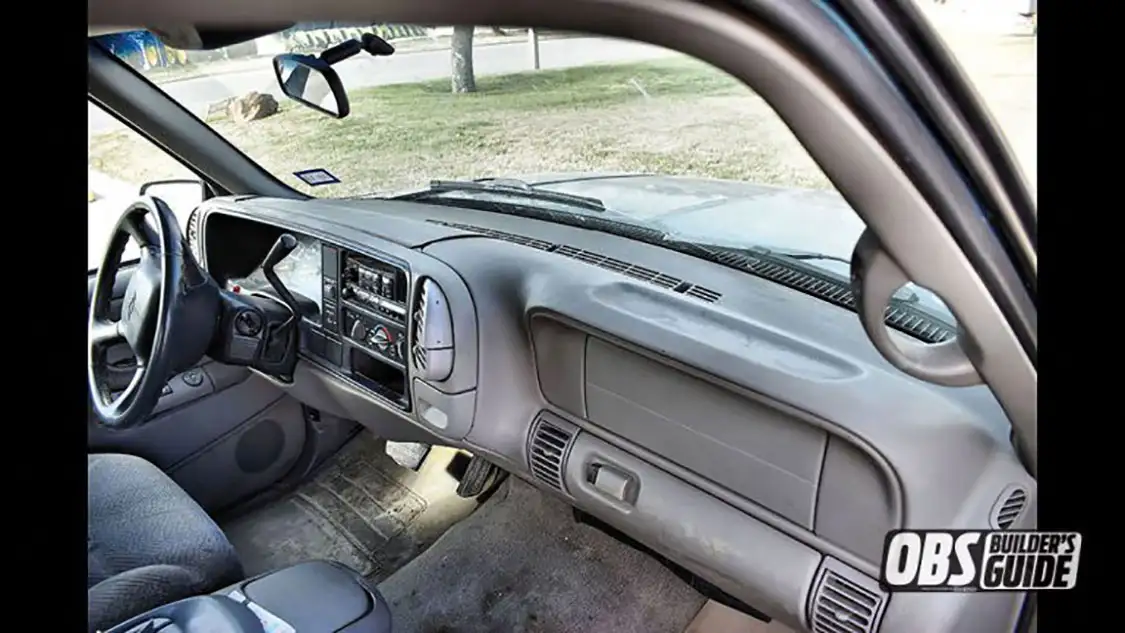
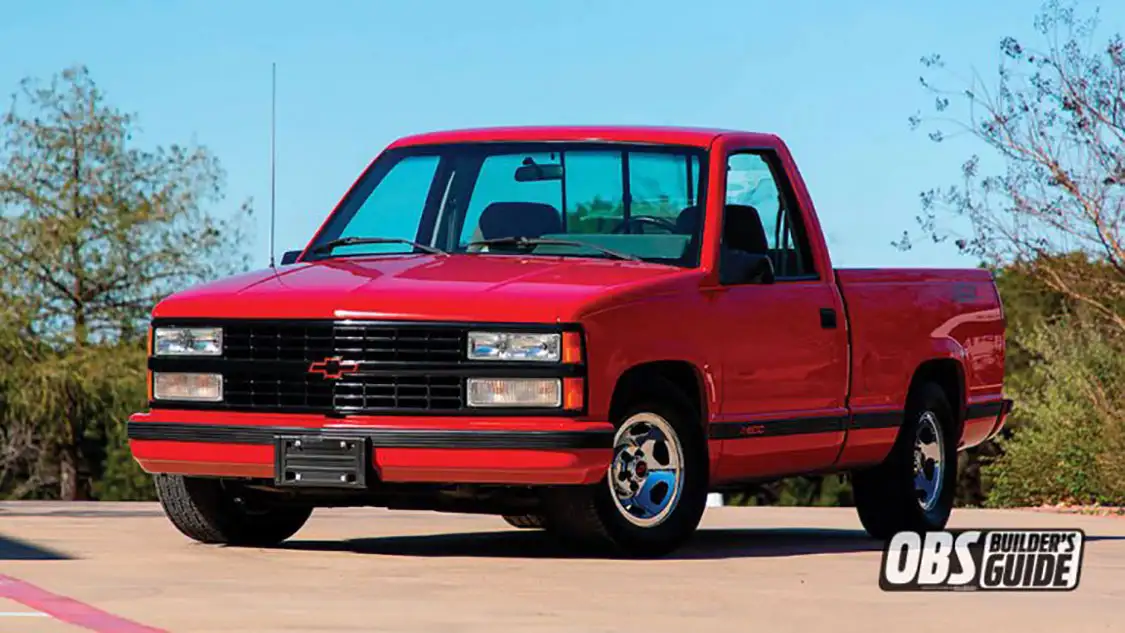
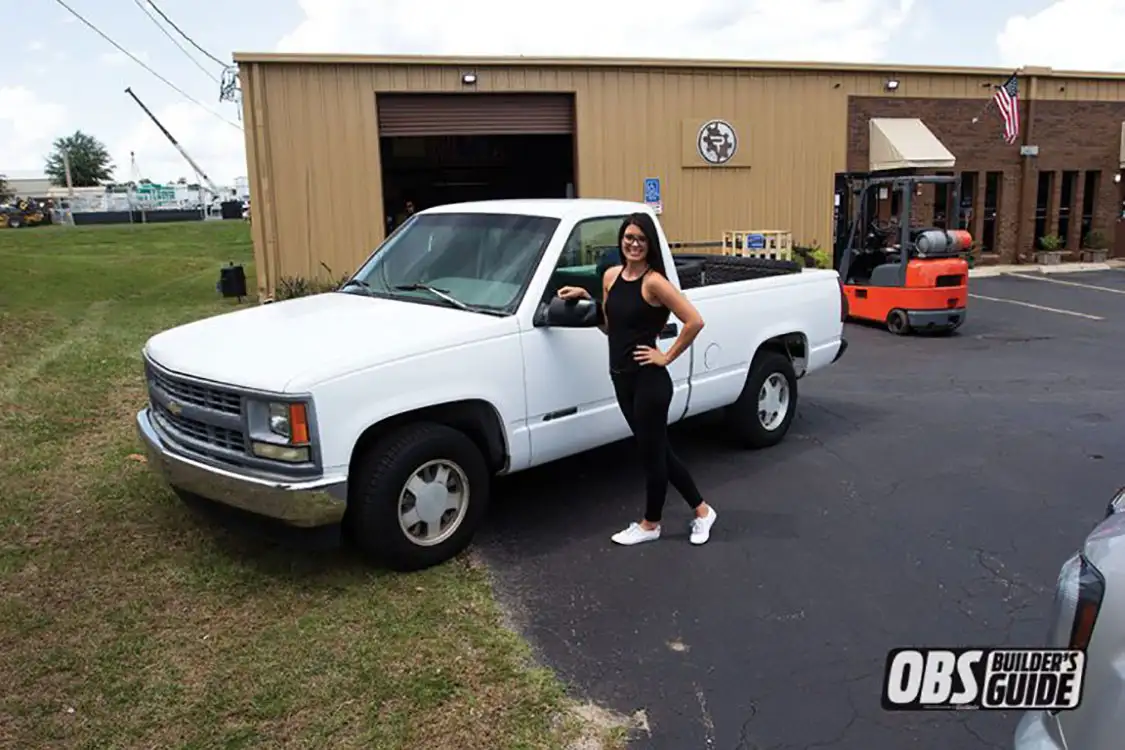 The Work Truck (W/T) was introduced in 1988, which featured a single cab long bed with Cheyenne trim and a new grille with black bumpers. Check out a tech article for this Chevy!
The Work Truck (W/T) was introduced in 1988, which featured a single cab long bed with Cheyenne trim and a new grille with black bumpers. Check out a tech article for this Chevy!
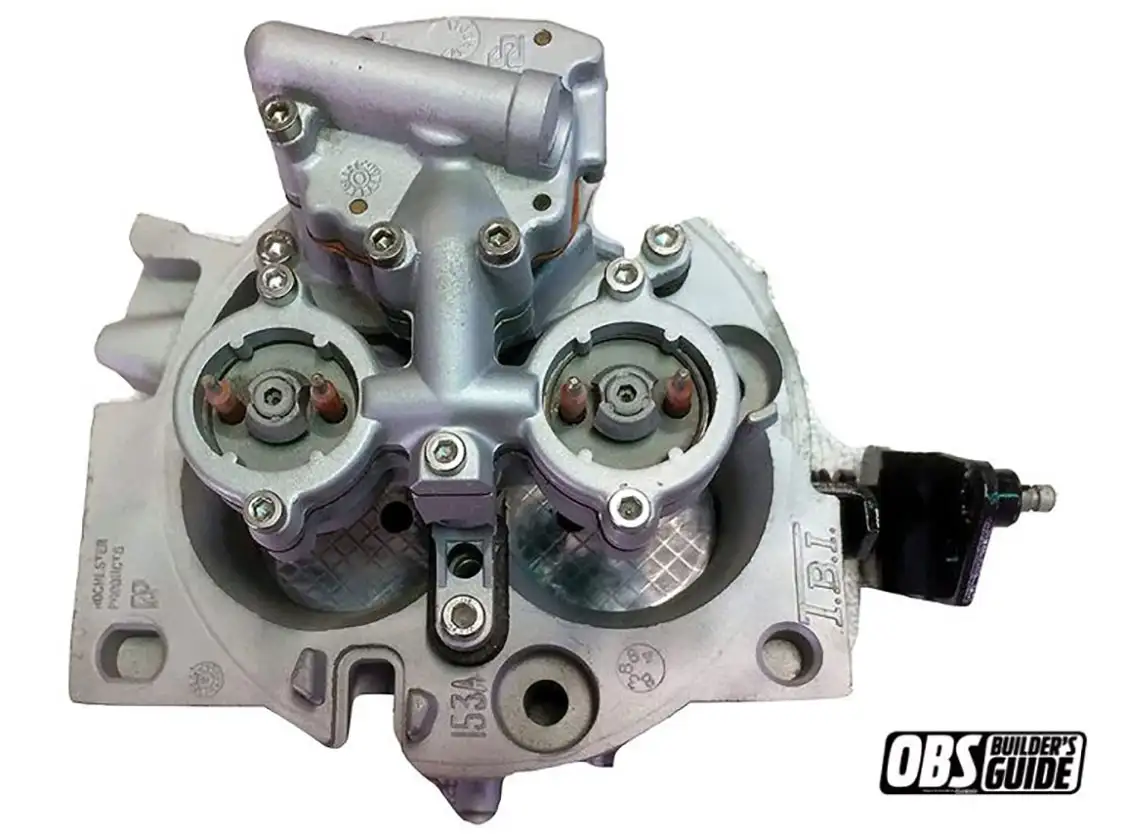 Throttle body(TBI) fuel injection was used on ‘88-’95 gas engines.
Throttle body(TBI) fuel injection was used on ‘88-’95 gas engines.
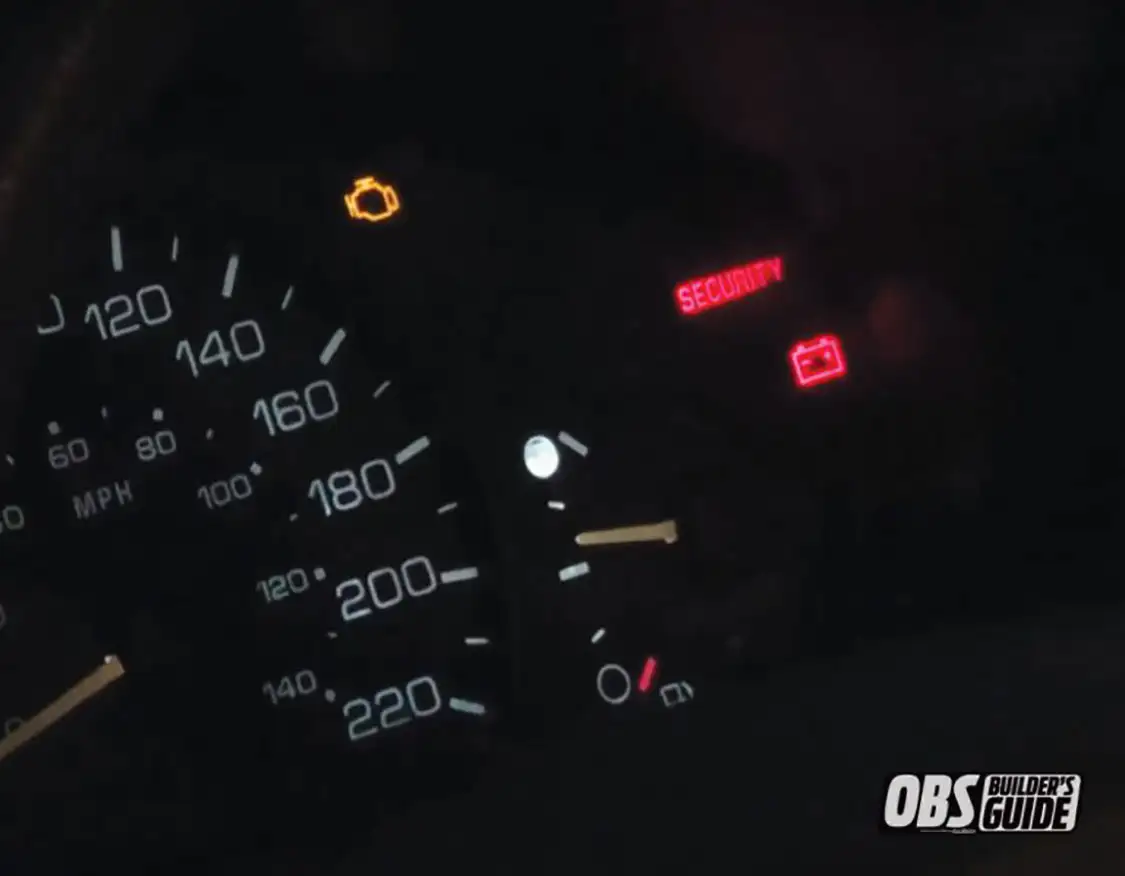 In 1998, to circumvent the rise in auto thefts, GM introduced the Pass Lock II system with a “security” light on the dash to the ’88 to ’98 OBS Chevy Trucks.
In 1998, to circumvent the rise in auto thefts, GM introduced the Pass Lock II system with a “security” light on the dash to the ’88 to ’98 OBS Chevy Trucks.
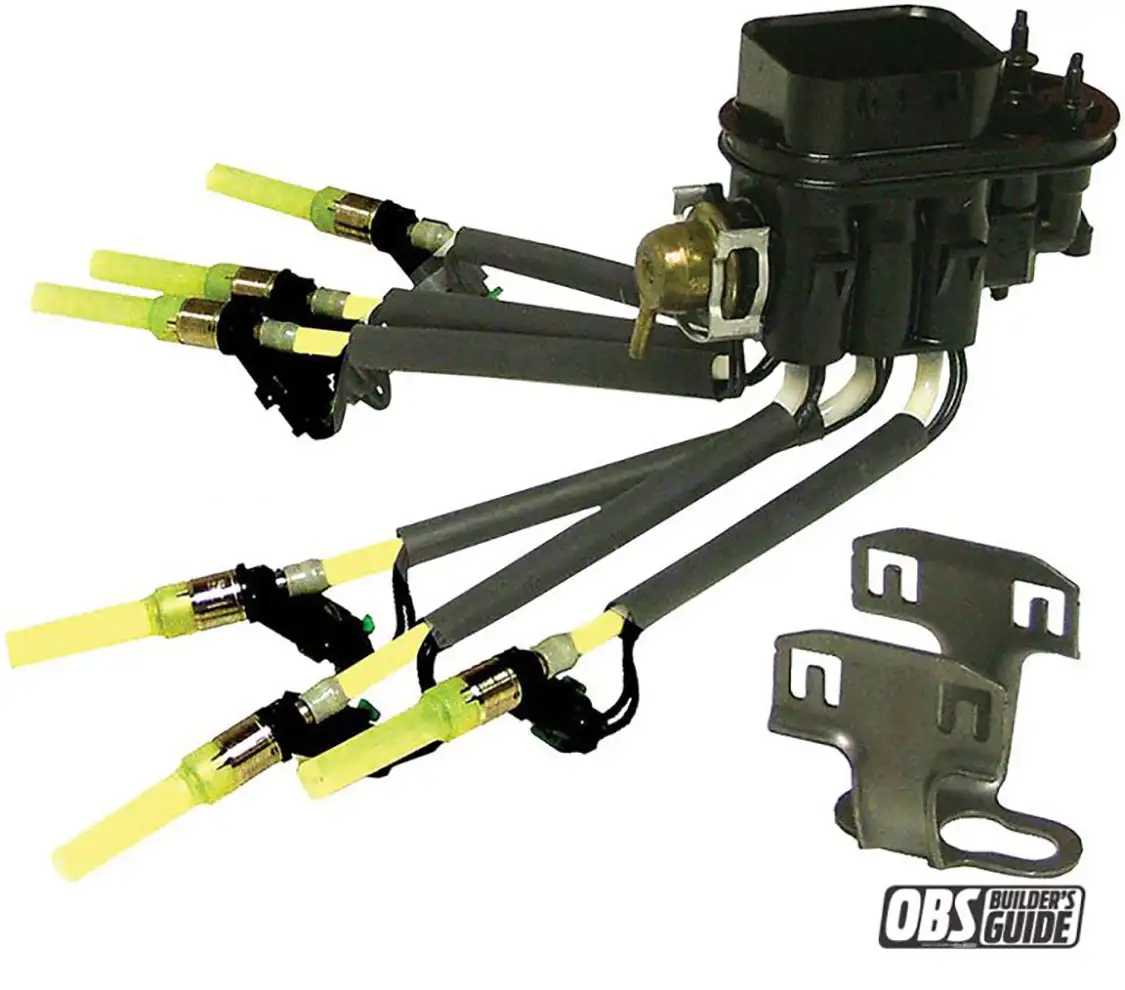 CPI (central point injection) was used on the ‘96-’00 4.3L-V6, 5.0L-V8, 5.7L-V8
CPI (central point injection) was used on the ‘96-’00 4.3L-V6, 5.0L-V8, 5.7L-V8
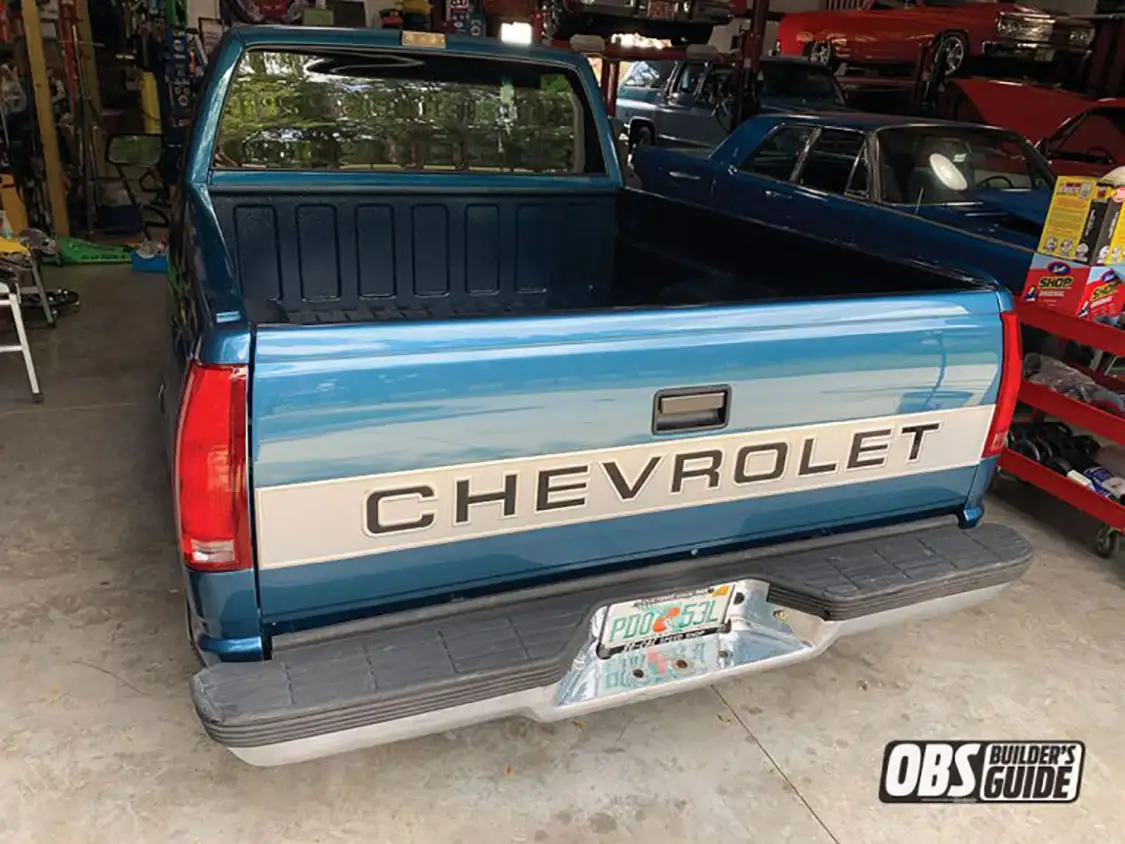 1997 was the last year the C/K Silverado would display ‘CHEVROLET’ on the tailgate, marking the end of an era for the OBS Silverado.
1997 was the last year the C/K Silverado would display ‘CHEVROLET’ on the tailgate, marking the end of an era for the OBS Silverado.
Read More: How To Bag Your ’88 -’98 OBS Chevy Truck?
Legacy of the Chevrolet C1500
The Chevrolet C1500 pickup truck, a staple of the 1990s, holds a special place in automotive history. Renowned for its rugged design and versatile capabilities, it quickly became a favorite among drivers looking for durability and reliability. Whether used for personal adventures or commercial purposes, the C1500 consistently delivered performance that earned it a loyal following.
A Versatile Workhorse
Designed to handle a variety of tasks, the C1500 was more than just a vehicle; it was a dependable partner. Contractors relied on it for its robust towing and hauling capabilities, while families appreciated its spacious interior and comfortable ride. This adaptability made it a go-to choice for many, endearing it to a wide range of users.
Cultural Icon
The C1500 didn’t just make its mark on the roads. Its distinctive appearance and dependable reputation earned it countless cameos in film and television, cementing its status as a cultural icon. According to the Internet Movie Car Database, the fourth-generation C1500 appeared in over 300 motion pictures and TV shows, a testament to its widespread recognition and appeal.
Collector’s Item
Decades after its heyday, the C1500 remains highly sought after by collectors and enthusiasts. Its enduring popularity is a clear indication of its lasting legacy. Enthusiasts appreciate its classic design and the nostalgia it evokes, while collectors prize its historical significance and timeless appeal.
In summary, the legacy of the Chevrolet C1500 is defined by its reliability, versatile functionality, and cultural impact. It remains a beloved truck that continues to capture the hearts of drivers, long after it first rolled off the assembly line.
Reliability and Cost-Effectiveness of a Well-Maintained GMT400 Pickup for Daily Use
When it comes to using a GMT400 pickup as a daily driver, reliability and cost-effectiveness take center stage. With proper maintenance, these vehicles are known for their unwavering dependability, clocking in impressive mileage without breaking a sweat. Imagine a truck that has cruised through 389,800 miles and still remains consistently reliable—this isn’t a rarity for a well-kept GMT400.
Reliability at Its Core
The GMT400 series is renowned for its robust engineering. Many owners report it as their trustworthy companion for everyday commutes. Even as the odometer climbs, these pickups tend to require minimal repairs, leading to fewer unexpected breakdowns. With routine maintenance, such as oil changes and timely check-ups, it’s not uncommon for them to reach such high mileage with ease.
Fuel Economy Insights
While fuel economy can vary, owners generally find these trucks economical compared to the broader spectrum of full-sized pickups. Typically, in open highway scenarios, a well-maintained GMT400 can achieve a respectable fuel average—sometimes around 21 miles per gallon. However, frequent city driving or congested traffic conditions can lead to higher fuel expenses.
Maintenance Costs
Long-term operating costs of a GMT400 are often focused on fuel consumption. Besides fuel, the cost of spare parts and repairs remains relatively low compared to other trucks in its category. Regular upkeep is key to ensuring such cost efficiency, enabling owners to manage expenses effectively without sacrificing reliability.
Conclusion
For individuals requiring a reliable and economical choice for daily transportation, a well-maintained GMT400 pickup stands out. Its proven track record of high mileage reliability and reasonable fuel consumption makes it a worthy contender in the realm of daily drivers.
I’m still driving my dad’s old ‘95 K1500 daily to commute for work. It has been to many states and does good on fuel. 5.7 with 4L60-E and 3.73 gears. I love these trucks! — Reddit user, r/GMT400
However, the most notable thing from the year 1990 was GM’s release of the 454 SS, Sport, and Sierra GT packages, all of which are highly sought after now. The 454 SS trucks from 1990-1993 featured significant enhancements that set them apart. These trucks were equipped with a powerful 7.4L big block V8 engine, delivering robust performance. Additionally, they boasted an upgraded suspension system, including gas shocks and larger stabilizer bars both front and rear, ensuring superior handling and stability.
1993 was the last year for the 454 SS, Sport, and Sierra GT packages and the first and only year for one of GM’s rarest production trucks ever made: the Indianapolis 500 Pace Truck package. GM only produced a little over 1,500, making the Indy Pace truck one of the rarest GM production trucks ever to roll off the assembly line.
In my opinion, 1988 was the exact year that jump-started the street truck era with the release of the all-new re-designed GM trucks commonly known as the “OBS” (Original Body Style, Old Body Style). This redesign by GM officially made a truck more than just a tool on the farm. It sparked the creation of an entire culture of automotive enthusiasts, and the street truck/sport truck movement was born. The GMT400 is said to have influenced GM designers long after they were no longer produced, and for good reason! We believe to this day they are the best-looking trucks on the road, we may be a little biased though!
The fourth-generation C1500 remains popular among truck enthusiasts because of its sleek styling and powerful V8 engines, and is a favorite to upgrade to more modern components.
Over its more than 10-year span of production, these trucks just got better and better in terms of design, comfort, reliability, power, and safety.
Quite possibly the best update to the OBS came in 1996, more power! Enter the Vortec line of engines for the 88-98 OBS Chevy trucks via central port fuel injection, roller cam, higher compression ratio, better flowing heads, and an all-around better engine.
Aside from that, GM introduced an optional third door for the extended cab trucks. If you’ve ever tried to climb in the back seat of an extended cab OBS, you can definitely appreciate this offering.
In 1993, GM also went to an electronically controlled transmission, better known as the 4L60, for improved reliability.
Under the hood, the 1988 Chevrolet C1500 offered several engine options. The base engine was the LB4 4.3L V6, which produced 160 horsepower and 230 lb-ft of torque. Other engine options included the L03 5.0L V8, the L05 5.7L V8, and a 6.2L Detroit Diesel V8.
From the fuel-efficient 4.3L V6 engine to the powerful 7.4L big block V8 engine and a torquey, fuel-sipping diesel, there was an engine option for almost every application. Transmission choices were a standard four-speed manual or the significantly more popular four-speed automatic.
In addition to these options, the introduction of the 4L60 in 1993 marked a shift towards electronically controlled transmissions, enhancing both performance and reliability. This transmission provided smoother shifts and better overall driving dynamics, making it a popular upgrade among C1500 enthusiasts.
In 1989, a Sport Equipment Package was available on either C/K1500 fleetside shortbed single cab models. The package featured a black grille with red outlined bow-tie emblem, black moldings outlined in red, body color front and rear bumpers, black mirrors and “SPORT” identification decals on the box and on the tailgate. There were no suspension or engine upgrades provided with any of the sport packages as this was an appearance only option.
Beyond the Sport Equipment Package, the C1500 offered a range of features and accessories designed to enhance both comfort and convenience. Some of the notable options included:
These options allowed buyers to customize their C1500 to better suit their personal needs and preferences, making the truck not only a robust work vehicle but also a comfortable and stylish ride.
OBS refers to Chevy C/K trucks that were manufactured by General Motors between the years of 1988 and 1998. Marketed under the Chevrolet and GMC brands, the C/K series included a wide range of vehicles including a chevy truck and two SUV models. While most commonly associated with pickup trucks, the model line also included medium-duty and heavy trucks. “C” denoted a two-wheel drive; “K” denoted four-wheel drive.
There were eight different versions of the C/K line for 1988: Fleetside Single Cab, Fleetside Extended Cab, Fleetside Crew Cab, and Stepside Single Cab models, each in either 2WD or 4WD drive-lines. Three trim levels were available for these trucks including Cheyenne, Scottsdale, and Silverado.
Under the hood, the 1988 Chevrolet C1500 offered several engine options to suit a variety of needs:
These engines provided a range from the fuel-efficient 4.3L V6 to the powerful 7.4L big block V8 and the torquey, fuel-sipping diesel, ensuring there was an option for almost every application. Transmission choices included a standard four-speed manual and the significantly more popular four-speed automatic.
In 1989, a Sport Equipment Package was available on either C/K1500 fleetside shortbed single cab models. The package featured a black grille with red outlined bow-tie emblem, black moldings outlined in red, body color front and rear bumpers, black mirrors, and “SPORT” identification decals on the box and on the tailgate. There were no suspension or engine upgrades provided with any of the sport packages as this was an appearance-only option.
’88-’95
Throttle body (TBI) fuel injection was used on ‘88-’95 gas engines, offering improved fuel efficiency and performance.
This comprehensive range of engine options and trim levels made the 1988 Chevrolet C1500 a versatile choice, capable of meeting the needs of a wide array of drivers, from those seeking basic transportation to those needing a robust workhorse.
Available Products for Chevy/GMC OBS C/K Trucks (1988-1998)
If you’re looking to upgrade or maintain your Chevy/GMC OBS C/K Truck from 1988 to 1998, there’s a wide range of products available. Below is a classified list of popular options:
Exterior Enhancements
Interior Components
Performance and Suspension
Engine and Drivetrain
Miscellaneous
Price Ranges and Fitment
Stock Availability
Upgrading or maintaining your Chevy/GMC OBS C/K Truck has never been easier with the variety of parts available. Whether it’s for performance, aesthetic, or basic replacements, you have plenty of options to choose from.
Fitment Categories for Chevy/GMC OBS C/K Trucks (1988-1998)
When it comes to selecting the right products for your Chevy/GMC OBS C/K Truck from 1988 to 1998, understanding the fitment categories is crucial. Here’s an easy guide to help you:
Vehicle Specific
Universal Fit
No Fitment Data
By understanding these categories, you can make better purchasing decisions and find the best products that meet your needs.
Billet Components for Chevy/GMC OBS C/K Trucks (1988-1998)
If you’re looking to upgrade your Chevy/GMC OBS C/K Truck from 1988-1998 with billet components, here are some options you can consider:
Interior Upgrades
Functional Upgrades
Comfort Enhancements
Upgrade your Chevy/GMC OBS C/K Truck with these billet components for enhanced functionality, better aesthetics, and improved durability.
1995 brought the GMT400 to an entirely new level with a completely redesigned interior that included a driver’s side airbag and optional CD player for added safety and convenience. The interior door panels received a noticeable re-design as well.
For those looking to further customize the interior of their Chevy/GMC OBS C/K Trucks from 1988-1998, here are some top-notch options available:
Each of these options not only enhances the aesthetic appeal of your truck but also adds a layer of personalization that reflects your unique style. Whether you’re aiming for a subtle upgrade or a complete interior overhaul, these billet accessories provide quality and flair.
In 1990 GM retired the dual glass headlights in favor of a composite headlight with a serviceable bulb.
For those looking to update or replace their lighting components on Chevy/GMC OBS C/K Trucks from 1988-1998, there are several options available:
These components not only improve functionality but also provide a modern aesthetic to your classic truck.
The enduring affordability and availability of these pickups stem largely from their high production volumes. Built for rugged durability, these trucks were designed to withstand tough conditions, often making them workhorses for many owners. Consequently, there are numerous models circulating in the market even today.
Key Factors Contributing to Their Market Presence:
Given these factors, potential buyers can benefit from the current pricing sweet spot. As these vehicles continue to age gracefully, they remain budget-friendly, providing a reliable option before any noticeable market appreciation kicks in.
The 1988-98 Chevy and GMC pickups, known as the GMT400 series, are climbing the ranks of classic status for several compelling reasons. At the heart of their appeal is the seamless blend of timeless design and modern functionality.
Perfect Blend of Classic and Modern
The trucks boast a size that’s just right, paired with subtle yet enduring styling. Mechanically straightforward, these vehicles typically house classic small block engines—sometimes even big blocks—that have proven incredibly resilient. This durability, combined with economical and dependable drivetrain components, makes them appealing as both nostalgic relics and practical daily drivers.
Configuration Versatility
One of the standout features of this era is the sheer variety of configurations available. Buyers could choose between two-wheel or four-wheel drive, opt for a flareside or stepside bed, and select a cab style that suited their needs. Whether it was a long bed for maximum cargo space, a short bed for a sportier look, or a dual rear wheel setup for serious towing capability, there was a version for everyone.
Historical Significance
These pickups arrived when the market demand for trucks was skyrocketing, embedding them into the cultural fabric of the United States. Almost everyone had a friend or relative who owned one, and their omnipresence during the era adds to their nostalgic value today.
Enthusiast Appeal
Notably, the SS models—with their big-block power—remain particularly sought after by collectors and enthusiasts. Despite performance figures that may not impress by today’s standards, their unique place in automotive history and distinctive styling make them desirable.
Affordability and Potential
On the financial side, many of these trucks remain affordable. Whether you’re looking for a project truck or a cleaner, more preserved model, options abound at reasonable prices. With some TLC, these trucks can be revitalized, with popular upgrades like the LS engine swap unlocking significant performance enhancements.
Cultural Impact and Future Appreciation
As more vehicles from the 80s and 90s gain recognition as legitimate classics, these pickups are poised to follow suit. Their blend of simplicity and style captures the essence of the era, and their story—woven into the rise of the American pickup—cements their classic potential. Whether you’re into customization or preserving authenticity, these trucks offer a versatile and exciting foundation.
In conclusion, the 1988-98 Chevy and GMC pickups epitomize a golden era of truck design and utility, earning them a rightful place in the annals of automotive classics. As they continue to be cherished and reimagined by enthusiasts, their status will only continue to grow.
Opting for an LS engine swap can significantly transform the performance of various truck models, unlocking a multitude of enhancements. The LS engine, known for its robust engineering and versatility, provides a foundation that suits a range of driving preferences and activities.
Unmatched Power and Efficiency
The LS engine is renowned for its impressive power output while maintaining efficiency. Whether you’re looking to boost horsepower for exhilarating speed or seeking a reliable engine that thrives under demanding conditions, an LSswap delivers on all fronts.
Versatility in Aftermarket Upgrades
With an LS swap, the scope for aftermarket customization expands, opening up possibilities for tailored performance upgrades. The LS platform supports a variety of modifications—from enhancing off-road capabilities to fine-tuning for drag racing supremacy. This makes it an ideal choice for enthusiasts eager to push the limits of their truck’s performance.
Balanced Performance Enhancements
For those interested in improving handling and overall dynamics, the LS engine contributes to a better weight distribution, which can enhance the driving experience significantly. This balance is crucial, whether tackling rough terrain or optimizing track performance, ensuring the truck handles responsively.
In short, an LS swap does more than just replace an engine; it transforms a truck into a versatile powerhouse capable of remarkable feats, depending on the owner’s vision and ambitions.
OBS refers to Chevy C/K trucks that were manufactured by General Motors between the years of 1988 and 1998. Marketed under the Chevrolet and GMC brands, the C/K series included a wide range of vehicles including a chevy truck and two SUV models. While most commonly associated with pickup trucks, the model line also included medium-duty and heavy trucks. “C” denoted a two-wheel drive; “K” denoted four-wheel drive.
These trucks became immensely popular due to their versatility and variety of configurations. Consumers had the freedom to choose from eight different versions of the C/K line for 1988, such as:
Each of these models was available in either 2WD or 4WD drivetrains. This level of choice allowed buyers to select a truck that perfectly matched their needs, whether for work or personal use.
Adding to the appeal were the three trim levels—Cheyenne, Scottsdale, and Silverado—each offering different features and comforts. Beyond the technical specifications, certain configurations like the “duallies” provided not just enhanced towing capacity but also a distinct style statement. Meanwhile, the SS 454 pickup captured the imagination of enthusiasts, maintaining its allure as a collector’s item even as the years passed.
This blend of customization, performance, and cultural impact is what made these trucks a cornerstone of the automotive market, leaving a lasting legacy that enthusiasts still celebrate today.
The fourth-generation C1500 remains popular among truck enthusiasts because of its sleek styling and powerful V8 engines, and is a favorite to upgrade to more modern components.
These trucks, now entering their rightful status as classics, offer incredible potential for both restoration and customization. Given their age, refreshing is often necessary, but the abundant options make it an exciting project for any enthusiast.
As these pickups continue to gain recognition alongside earlier classics, their restoration or upgrade potential ensures they remain a beloved choice for generations to come.
However, the most notable thing from the year 1990 was GM’s release of the 454 SS, Sport, and Sierra GT packages, all of which are highly sought after now. The 454 SS trucks from 1990-1993 featured significant enhancements that set them apart. These trucks were equipped with a powerful 7.4L big block V8 engine, delivering robust performance. Additionally, they boasted an upgraded suspension system, including gas shocks and larger stabilizer bars both front and rear, ensuring superior handling and stability.
The SS 454 pickup stands out as a true classic in the eyes of enthusiasts and collectors. Its desirability transcends mere performance metrics, which may seem unimpressive by today’s standards. Instead, the allure lies in its iconic status and the nostalgia it evokes—a testament to its enduring appeal among those who appreciate automotive history.
1993 was the last year for the 454 SS, Sport, and Sierra GT packages and the first and only year for one of GM’s rarest production trucks ever made: the Indianapolis 500 Pace Truck package. GM only produced a little over 1,500, making the Indy Pace truck one of the rarest GM production trucks ever to roll off the assembly line.
The combination of rarity, performance, and a rich legacy makes the SS 454 pickup a coveted piece of automotive heritage. Collectors and enthusiasts are drawn to its unique character and the engineering marvel it represents from an era when big-block engines ruled the roads.
While the SS 454 pickup was impressive during its release, its performance now seems modest compared to contemporary vehicles that benefit from advanced technology and engineering.
The fourth-generation C1500 remains popular among truck enthusiasts because of its sleek styling and powerful V8 engines, and is a favorite to upgrade to more modern components. Over its more than 10-year span of production, these trucks just got better and better in terms of design, comfort, reliability, power, and safety. Quite possibly the best update to the OBS came in 1996, more power! Enter the Vortec line of engines for OBS trucks via central port fuel injection, roller cam, higher compression ratio, better flowing heads, and an all-around better engine. Aside from that, GM introduced an optional third door for the extended cab trucks. If you’ve ever tried to climb in the back seat of an extended cab OBS, you can definitely appreciate this offering.
Classic Meets Modern
The ’88-’98 Chevy and GMC trucks strike a perfect balance between the classic and the modern. Their design features a just-right size and subtle styling that captures the essence of traditional American trucks while incorporating modern aesthetics. This combination has garnered a loyal fan base over the decades.
Mechanical Simplicity and Reliability
These trucks are equipped with the classic small block Chevy, and occasionally the big block, engines under the hood. This setup offers mechanical simplicity and durability that have stood up to a lot of abuse. Despite their classic foundation, these trucks are modern enough to serve as reliable daily drivers.
Endless Customization Potential
With proven and inexpensive drivetrain components, these trucks offer near-endless aftermarket potential. Enthusiasts can enjoy the best of both worlds—classic charm with modern enhancements—making these trucks a canvas for customization.
Incorporating these features ensures that the ’88-’98 Chevy and GMC trucks not only remain relevant but continue to be cherished for their timeless appeal and adaptability in today’s automotive world.
Key Design and Mechanical Innovations of the GMT400 Pickups
The GMT400 pickups marked a significant evolution in both design and mechanics compared to their predecessors. Let’s dive into the standout features that set them apart:
Sleek Aerodynamic Design
Gone were the boxy shapes of old, as the GMT400 featured a more streamlined and aerodynamic exterior. This new design was not just about aesthetics; it contributed to better fuel efficiency and modernized the truck’s overall appeal.
Independent Front Suspension for 4×4 Models
One of the groundbreaking changes was the introduction of independent front suspension in the four-wheel-drive models. This advancement replaced the traditional solid front axle and leaf springs with torsion bars and CV joints. The result? A smoother ride and improved handling, especially in challenging terrains.
Shift-on-the-Fly Four-Wheel Drive
Another significant innovation was the shift-on-the-fly four-wheel drive system. Unlike previous models that required manually locking hubs, drivers could now switch between two-wheel and four-wheel drive with ease and convenience, even while on the move.
Enhanced Safety Features
Safety was also a priority in the GMT400’s design. The truck’s frame was broadened to accommodate the fuel tank within the vehicle’s body, addressing past safety issues associated with exterior-mounted gas tanks.
In summary, the GMT400 pickups set a new standard with their aerodynamic design, advanced suspension technology, user-friendly four-wheel drive system, and improved safety features, paving the way for the modern truck.
The Impact of Rust on Pickup Longevity
Rust can significantly shorten the lifespan of pickups by compromising structural integrity and overall functionality. This insidious problem affects several critical areas, leading to costly repairs and decreased vehicle value.
Most Vulnerable Areas
Conclusion
Despite initial claims of exceptional rust protection, these pickups often fall victim to corrosion, especially when compared to earlier models. Regular maintenance and protective measures are essential to extending their lifespan and preserving their structural soundness.
Common Issues with GMT400 Pickups
Owning a GMT400 pickup can be a rewarding experience, yet it’s important to be aware of a few common challenges that owners might encounter. By understanding these issues, you can better prepare for maintenance and improvements.
Rust Concerns
One of the most notorious problems with these pickups is rust. Despite claims of robust corrosion protection, rust is a persistent issue, particularly in cab corners, rocker panels, and wheel arches. This is especially true in regions with wet or snowy conditions.
Aging Dashboard and Upholstery
Models from earlier years feature dashboards made of hard plastics that are prone to cracking or even disintegrating due to prolonged sun exposure. Those manufactured in later years offer improved resistance. As for the interiors, cloth upholstery generally holds up better over time compared to leather seats.
Paint and Clear Coat Problems
Like many American vehicles from the ’80s and ’90s, GMT400s often suffer from clear coat peeling and paint oxidation. This stems from manufacturers adapting to new paint emissions standards at the time, leading to materials that didn’t withstand UV damage well.
Braking System Limitations
The standard brakes on these pickups can feel inadequate, especially when towing or hauling. With relatively small front rotors and single-piston calipers, the braking system can feel mushy and unresponsive. This can be addressed with aftermarket upgrades for those seeking enhanced braking performance.
Despite these issues, solutions are readily available. The popularity of GMT400 pickups ensures a steady supply of replacement parts from both new and used sources. Engineered parts, sheet metal, and interior components are accessible from many third-party restoration specialists and auto parts retailers. This availability allows you to maintain or restore your pickup with ease, turning these challenges into manageable tasks.
Challenges of Upgrading GMT400 Engines in Strict Emissions Regions
Upgrading or modifying engines in GMT400 pickups presents unique challenges, especially in areas with stringent emissions regulations. Here’s a breakdown of the hurdles you might face:
Emissions Compliance
The Complexity of Modern Engine Swaps
Overcoming Emissions Restrictions
Despite the stringent laws, the potential for creating a cleaner, more efficient engine exists with today’s aftermarket parts. However, the process requires meticulous planning, the right components, and an in-depth understanding of emissions compliance to succeed in regions with strict regulations.
By addressing these challenges methodically, you can achieve enhanced performance while adhering to the necessary legal standards.
Limitations of GMT400 Pickup Brakes
Drivers of GMT400 pickup trucks often encounter significant limitations with the stock braking system, particularly during demanding driving conditions. Here’s a comprehensive breakdown of these challenges:
These limitations make it clear that while the brakes serve their purpose under normal conditions, they can fall short during more intense usage. Upgrades to larger rotors and calipers, as well as improvements to the mechanical components, are often considered to enhance the braking performance to meet user demands.
The clear coat on trucks from the ’80s and ’90s often deteriorates largely because of the materials and processes used during that era. As American car manufacturers were adapting to stricter paint emissions regulations, they shifted to more environmentally friendly products.
However, these newer materials were less resistant to prolonged sun exposure. UV radiation from the sun can easily damage these finishes, leading to oxidation and peeling. Over time, this results in the clear coat breaking down, leaving behind a dull, weathered appearance.
Environmental factors, such as harsh weather conditions, further accelerate this degradation. As a result, many trucks from this period exhibit clear coat failure due to a combination of regulatory changes and environmental exposure.
When exploring manual transmission options for GMT400 trucks, you’ll find several possibilities based on the truck’s model and desired performance. The half-ton pickups are often equipped with a HM290/5LM60 or an NV3550 five-speed transmission. These options generally manage around 300 lb-ft of torque, making them suitable for standard driving requirements.
For those driving 2500 and 3500 series models, a more robust choice is the NV4500 transmission. This variant is designed specifically for trucks, characterized by a steeper first gear and larger RPM drops between shifts, offering durability for heavier loads.
However, if you aim to enhance your truck’s performance by switching from an automatic to a manual, consider opting for a “car” transmission. Upgrading to a TKO five-speed or T56 Magnum six-speed can significantly elevate the driving experience, providing smoother shifts. Kits are available that include essential components like the flywheel, clutch assembly, and hydraulics. Additionally, assistance with sourcing a clutch pedal is often necessary since they are not commonly found in the used parts market.
Absolutely, there are plenty of aftermarket solutions to tackle common GMT400 issues. These trucks were not only popular but also well-supported by an extensive aftermarket network.
Replacement Parts Availability
You can easily find original replacement parts through various channels. Many dealerships still stock these parts, and they’re readily available at numerous online retailers and your local auto parts stores. For those who are budget-conscious, used parts are frequently sourced from junkyards, a fantastic alternative that keeps costs down.
Body and Interior Restorations
Restoring the body of your GMT400 is straightforward with numerous options for replacement sheet metal. Whether you need cab corners, rocker panels, or even full doors and tailgates, there’s an affordable solution. Additionally, interior refurbishment is a breeze with widely available door panels, carpet kits, and upholstery. These upgrades can often be completed with just a weekend’s work.
With these resources, maintaining and enhancing your GMT400 is not only possible but also surprisingly economical.
The fourth-generation C1500 remains popular among truck enthusiasts because of its sleek styling and powerful V8 engines, and is a favorite to upgrade to more modern components. The appeal lies not just in its aesthetics but also in its straightforward engineering. These trucks boast a simple construction that invites customization, making them a dream for those looking to modify their vehicles.
With millions produced during their heyday, these trucks are not only accessible but also budget-friendly. This abundance ensures a steady supply for restoration projects. Additionally, the thriving aftermarket scene offers a wide range of performance parts, allowing owners to enhance both performance and appearance with ease.
Whether you’re restoring these classic beauties or diving into a resto-mod project, the GMT400 series provides a versatile platform that can adapt to various styles and needs.
In 1993, GM also went to an electronically controlled transmission, better known as the 4L60, for improved reliability.
Under the hood, the 1988 Chevrolet C1500 offered several engine options. The base engine was the LB4 4.3L V6, which produced 160 horsepower and 230 lb-ft of torque. Other engine options included the L03 5.0L V8, the L05 5.7L V8, and a 6.2L Detroit Diesel V8.
From the fuel-efficient 4.3L V6 engine to the powerful 7.4L big block V8 engine and a torquey, fuel-sipping diesel, there was an engine option for almost every application. Transmission choices were a standard four-speed manual or the significantly more popular four-speed automatic.
In addition to these options, the introduction of the 4L60 in 1993 marked a shift towards electronically controlled transmissions, enhancing both performance and reliability. This transmission provided smoother shifts and better overall driving dynamics, making it a popular upgrade among C1500 enthusiasts.
For those seeking more robust manual transmission options, the GMT400 series offered a variety of choices tailored to different applications. The half-ton pickups typically came with the HM290/5LM60 or NV3550 five-speed transmissions, capable of handling around 300 lb-ft of torque. These were well-suited for everyday driving and light-duty tasks.
However, for heavier-duty trucks such as the 2500 and 3500 series, the NV4500 was the go-to transmission. Known for its durability, it featured a steeper first gear and larger RPM drops between shifts, catering to the demanding needs of these bigger trucks.
For performance enthusiasts interested in manual swaps, opting for a “car” transmission can significantly enhance the driving experience. Consider upgrading to a TKO five-speed or T56 Magnum six-speed transmission, which offer smoother shifting and are designed to handle increased power levels. When undertaking such upgrades, it’s essential to also acquire complementary components like the flywheel, clutch assembly, and hydraulics to ensure seamless integration and optimal performance.
These transmission choices and upgrades not only affect the truck’s drivability but also expand its versatility, catering to a range of needs from daily commutes to high-performance applications.
From coilovers and upgraded shocks to air suspension and enhanced stabilizer bars, the fourth-generation C1500 offers a range of suspension upgrade options. Whether you’re setting your truck up for the strip, autocross, or just cruising, these modifications can drastically improve your ride’s performance and comfort.
For those looking to take a step beyond typical drop spindle and axle flip kits, consider front and rear coilover conversion kits. These kits often feature unique components such as rear upper A-arms or torque arms with Panhard bars, providing enhanced stability and control.
Front Suspension Enhancements:
Rear Suspension Options:
For those interested in frame stiffening and steering improvements, consider exploring options from specialized manufacturers who focus on the C1500 platform. Their custom solutions can provide significant performance boosts.
Braking Upgrades:
These enhancements not only improve the handling and safety of your vehicle but also add to its aesthetic appeal, ensuring your truck looks as good as it performs.
The mechanical features of classic trucks have played a pivotal role in enhancing their appeal and popularity over the years. Here’s how:
Simplicity and Durability
Classic trucks are known for their straightforward design, making mechanical maintenance straightforward, even for novice enthusiasts. The small-block and big-block engines, for example, are legendary for their durability. These engines can handle significant wear and tear, a testament to their robustness and reliability.
Adaptability as Daily Drivers
Despite their vintage charm, these trucks are versatile enough to be used as everyday vehicles. The blend of simplicity with a hint of modern technology allows for comfort and practicality. Their components are tried and true, offering both reliability and affordability in maintenance.
Extensive Aftermarket Potential
One of the standout features is the vast aftermarket part availability. Enthusiasts can customize their trucks extensively thanks to a nearly limitless supply of upgrade options. This not only enhances performance but also allows endless personalization, ensuring each vehicle can be a unique reflection of its owner.
In summary, the mechanical features of these classic trucks provide a seamless balance of simplicity, utility, and customizability, all contributing significantly to their enduring appeal.
Choosing to maintain a classic truck in its original state is a decision that resonates with many enthusiasts. Here’s why:
In essence, keeping a truck in its original state can be a meaningful way to honor its legacy while enjoying its unique charm.
An LS swap has become a go-to modification for many truck enthusiasts due to its impressive blend of performance, versatility, and straightforward installation. Here’s what makes it so appealing:
These factors combined make the LS swap a top choice for those looking to maximize their truck’s potential without sacrificing reliability or breaking the bank.
Share Link